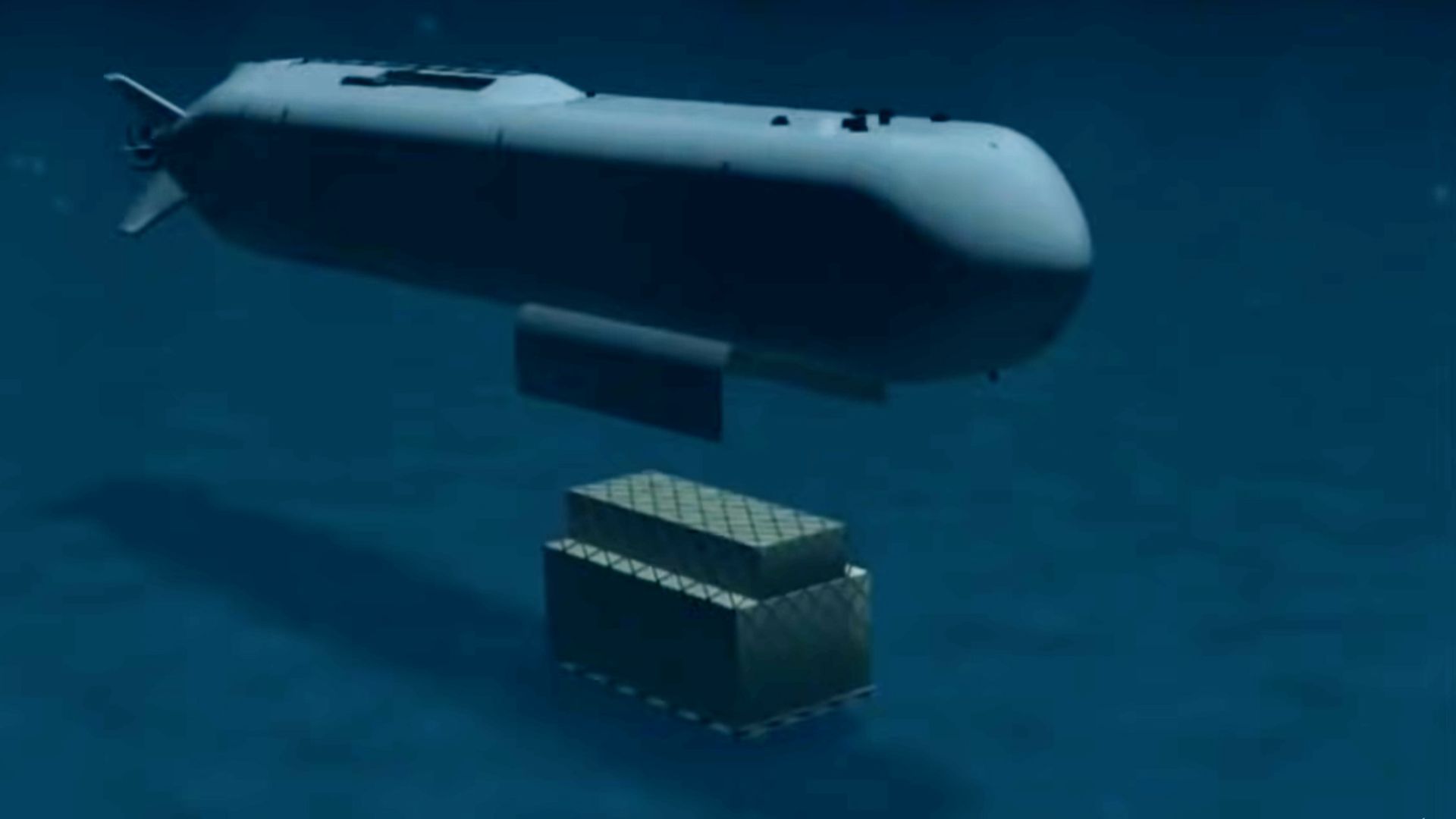
MOVE OVER, WILLY, WE’VE GOT A NEW FAVORITE ORCA IN THE WATER. BOEING DEFENSE RECENTLY RELEASED THIS VIDEO OF ITS ORCA, FITTINGLY SURROUNDED BY A POD OF SLIGHTLY DUMBFOUNDED DOLPHINS.
BOEING’S ORCA IS WHAT’S KNOWN AS AN EXTRA LARGE UNMANNED UNDERSEA VEHICLE, OR XLUUV. THE PENTAGON ORDERED A POD OF FIVE ORCAS IN 2019, BUT THIS VIDEO IS THE FIRST TIME THE CRAFT HAS BEEN SEEN OPERATING IN THE WATER.
THE NAVY PLANS TO USE THE 85-FOOT-LONG UNDERWATER DRONES FOR MANY OF THE SAME SORT OF MISSIONS CREWED SUBMARINES HANDLE LIKE INTELLIGENCE, SURVEILLANCE AND RECONNAISSANCE.
THE ORCA IS A HYBRID. IT USES DIESEL ENGINES WHEN AT OR NEAR THE SURFACE, AND CAN SWITCH TO BATTERY POWER WHEN IT NEEDS TO BE QUIET.
THE ORCA CAN OPERATE FOR MONTHS AT A TIME IN OPEN WATER. AND WHILE IT’S BIG FOR A DRONE, IT’S SMALL FOR A SUBMARINE. SO, IT CAN ALSO OPERATE IN MORE SHALLOW AREAS LIKE COASTLINES, LITTORALS, OR EVEN RIVERS. IF THE NAVY WANTED TO LAY MINES IN AN ENEMY NATION’S PORTS UNDETECTED, THE ORCA COULD PROBABLY DO IT.
THE MODULAR DESIGN OF THE ORCA ALLOWS FOR MULTIPLE PAYLOAD CONFIGURATIONS. SO, EVENTUALLY ORCAS COULD BE OUTFITTED TO LAUNCH THINGS LIKE TOMAHAWK CRUISE MISSILES OR HARPOON ANTI-SHIP MISSILES.
THE ORCA ISN’T THE ONLY MECHANICAL WHALE TO TAKE TO THE WATERS RECENTLY EITHER.
ISRAELI AEROSPACE INDUSTRIES UNVEILED ITS BLUEWHALE LARGE AUTONOMOUS UNDERWATER VEHICLE. THE BLUEWHALE IS ALL ELECTRIC AND ABOUT HALF THE SIZE OF THE ORCA, SO IT DOESN’T HAVE THE SAME ENDURANCE BUT BOASTS SOME OF THE SAME FEATURES, LIKE A TELESCOPIC MAST. THE BLUEWHALE CAN HANDLE SOME OF THE SAME TYPE OF MISSIONS AS THE ORCA; MOSTLY MINE DETECTION AND INTELLIGENCE GATHERING.
ALSO LIKE THE ORCA, THE BLUEWHALE CAN LAUNCH UNMANNED AERIAL VEHICLES WHILE SUBMERGED, AND THIS IS WHERE THINGS REALLY GET INTERESTING IN TERMS OF OPERATING DIFFERENT TYPES OF DRONES IN DIFFERENT DOMAINS.
A POD OF ORCAS OR BLUE WHALES LAUNCHING A SWARM OF UAVS IS TRULY GAME-CHANGING TECHNOLOGY. THE UAVS CAN ESSENTIALLY ESTABLISH A WEB OF COMMUNICATIONS FOR ALL ASSETS IN THE AREA, GIVING THE FLEET THE ABILITY TO DETECT AND STRIKE ENEMY CRAFT BEYOND THE HORIZON, ALL WHILE GOING UNNOTICED.
WITH THIS SORT OF TECHNOLOGY ALREADY BEING PUT THROUGH THE RIGORS OF MILITARY TESTING, WE MAY NOT BE THAT FAR OFF FROM UNMANNED SUBMARINES LIKE THE ORCA SETTING SAIL FROM A U.S. PORT, TRAVELING TO CONTESTED WATERS, AND LAUNCHING AERIAL ATTACK DRONES FROM DEPTH.
LIKE PREDATOR DRONES DURING DESERT STORM, WHICH WERE FLOWN BY HUMAN PILOTS THOUSANDS OF MILES AWAY, THE FUTURE OF MARITIME OPERATIONS COULD KEEP MORE AND MORE SAILORS OUT OF THE WATER.
FOR MORE UNBIASED, STRAIGHT FACT REPORTING ABOUT DRONES, NAVIES, AND OTHER MILITARY MATTERS BE SURE TO CHECK OUT SAN.COM.










